Exif Picks: Mecum Glendale 2023 Public sale

[ad_1]

Massive auto auctions are good at just a few issues, particularly presentation and drumming up some critical dream machines. However within the case of the upcoming Mecum Glendale, Arizona, public sale (March 28 to April 1), we felt there have been just a few incredible bikes that didn’t obtain due credit score. Both underrepresented, or a bit inaccurate, it was our responsibility to offer these rides their time within the highlight.
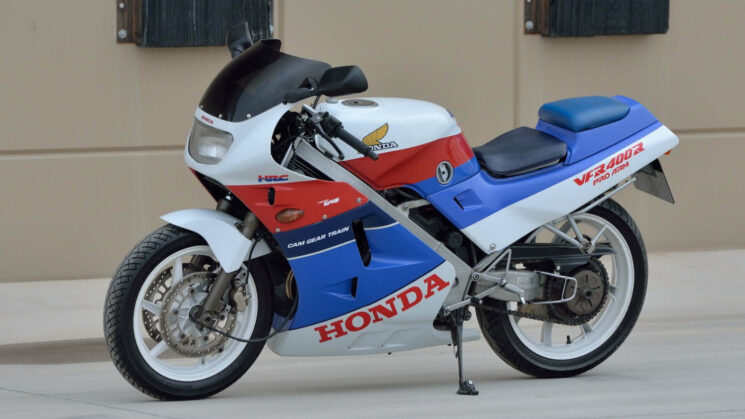
1987 Honda VFR400 NC24 Should you had been a fan of sportbike racing within the late Nineteen Eighties, you most likely knew, and longed for, Honda’s VFR750R RC30. With a number of Sportbike World Championship titles, Grand Prix victories and a lap document on the Nürburgring’s Nordschleife loop, the RC30 had greater than confirmed its mettle, even into the early Nineties. Costly and in-built restricted numbers, the RC30 wasn’t probably the most sensible road machine for everybody. Honda had an answer for the motorsport lots, although, within the type of the scaled-down VFR400.
Honda unveiled the NC21 VFR in 1986, powered by a 399 cc, 16-valve V4 constructed within the spirit of the RC30. The bike was designed primarily for the Japanese market, the place the sub-400 cc engine skirted harder licensing rules for larger cc bikes. However don’t let that statistic idiot you, because the VFR400 has loads of chew to match its bark.
The 90-degree V4 is nice for 59 hp at 14,000 rpm (within the NC24 model), and its valvetrain is operated by straight-cut gears that produce a big whine all through the rev vary. Honda additionally went to nice lengths to include all of the 750’s perspective into the VFR400, using related geometry that positioned the rider proper excessive of the 17-inch entrance wheel. Clip-on bars, rearsets and minimal upholstery meant that you simply rode it like a correct sports activities bike, and large dual-discs up entrance offered confidence within the bends.
Out again, Honda integrated a single-sided “Professional-Arm” swingarm, making it one of many first corporations to take action in a manufacturing bike. The rear wheel was affixed with 4 bolts (typically hidden by a plastic cowl), and the exhausts had been routed excessive to keep away from obstructing the eight-spoke solid wheel. Mecum’s Lot W7 seems to be a really authentic, rider-quality NC24 VFR with simply over 36,000 miles on the clock. This gray-market instance is a uncommon sight in the USA, and its hammer worth will definitely outpace your common 400 cc bike of the day.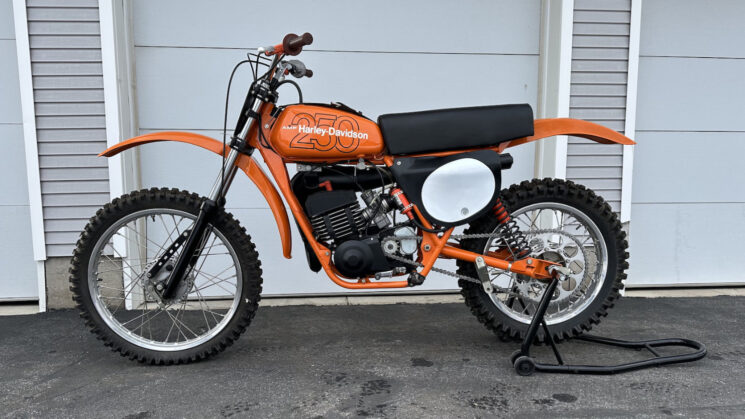
1978 Harley-Davidson MX250 It’s no stretch to say that Harley-Davidson has characteristically been set in its methods, however that wasn’t at all times the case. Again within the Nineteen Seventies, dozens of small cc bikes carried the HD nameplate from the acquisition of Italian Aermacchi, and snowmobiles hit the paths sporting AMF-HD decals. Trying to money in on the booming motocross scene, Harley-Davidson poured a hefty funding into an all-out 250 cc motocrosser for 1978, dubbed the MX250.
Like some other two-stroke HD of the period, Aermacchi was tasked with the development of the MX250, however it proved to be an uphill battle. Preliminary makes an attempt in 1976 resulted in a slipshod trying bike, with an underpowered engine and a set of modified forks grafted onto the rear swingarm. Harley and Aermacchi returned to the drafting board with motocrosser Rocket Rex Staten on board to enhance this system, ensuing within the new ’78 MX250.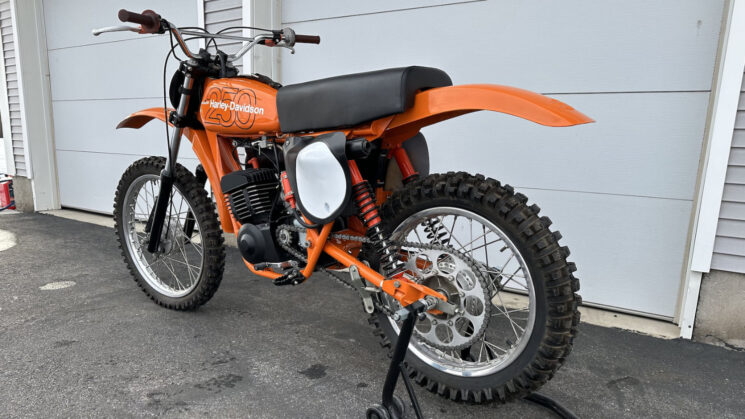
Wanting like a way more critical contender, the brand new MX utilized a extra highly effective, 242 cc Aermacchi engine with a 38 mm DellOrto carburetor — good for 32 hp. The earlier rear suspension was ditched in favor of extra typical distant reservoir shocks within the rear, and KYB forks boasted 9 inches of journey up entrance. A light-weight aluminum gasoline tank was held on with a leather-based strap, and the chassis was strengthened all through.
The all-new Harley-Davidson MX250 was good, however sadly not all that good. Your 32 hp allegedly got here on like a lightswitch between 7,000 and 9,000 rpm, making it a bit unwieldy, and it was heavier and costlier than Japan’s aggressive 250s. Even with a workforce of factory-sponsored professionals on board, the MX250 did not carry out, and Harley deserted its motocross goals (and Aermacchi all collectively) after 1978. Simply 900 MX250s had been constructed for the ’78 mannequin 12 months, and rumor is that many went unsold.
Whereas it wasn’t a win on paper (or on the rostrum), the MX250 is cool in my ebook for what it may have been, and its flashy ’70s MX seems. Mecum’s Lot W264 is claimed to be a ground-up restored instance utilizing NOS components, and might be one of many nicest on the market. Barring any unexpected points, this one’s most likely price north of $7,000 at this time.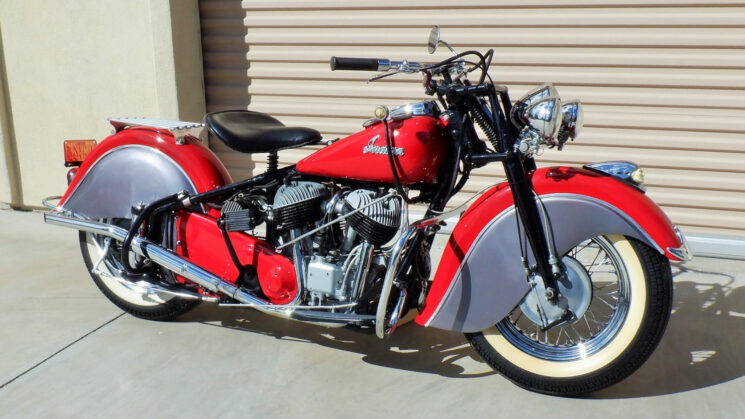
1948 Indian Chief An early Indian Chief is a kind of bikes that absolutely defies model loyalties. Gorgeous artwork deco affect shines via in its flowing bodywork and enveloping fenders, and chrome options abound. However as a lot because the 1948 Chief exudes American extra, the marque and mannequin had been in decline.
Regardless of quite a few makes an attempt at navy contracts, Indian emerged from World Struggle II with comparatively little to indicate for its efforts. Adjustments in management adopted, and the Chief was the corporate’s solely providing for a pair years. The Chief was dropped from Indian’s lineup for 1949 in favor of smaller, extra inexpensive choices, earlier than making a short comeback from 1950 to 1953.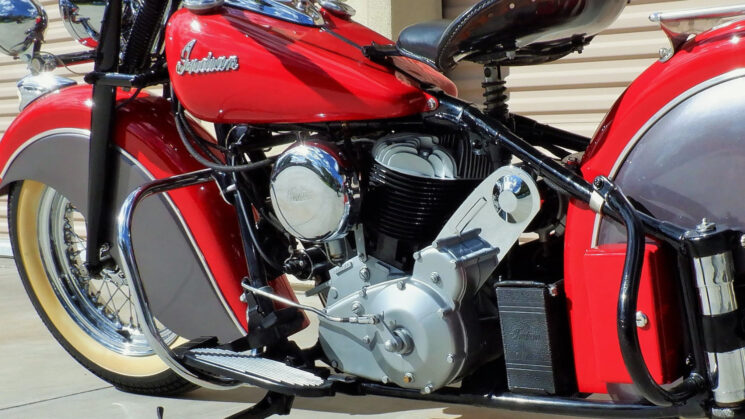
Inspecting a late ’40 Indian Chief from tip to tail, it’s tough to fathom the corporate’s monetary struggles. Enveloping finders and bodywork outclassed its competitors, together with all of the chromework, lighting and road-going options you might ask for. Throw a leg over the Chief, and also you had been met with a big sprung saddle, swish right-hand tank shift, full floorboards and a girder entrance finish. And till Harley-Davidson unveiled the Panhead in 1948, the Chief’s 74 ci twin was good for a similar 40 hp because the Knucklehead, and the Chief boasted a sprung plunger rear finish over the HD’s inflexible.
Possibly the Chief wasn’t ready for issues to come back, as Harley’s ’48 Panhead would undertake telescoping entrance forks and one other 10 hp. However nowadays the Indian Chief is as cool because it will get, and an on the spot “in” wherever. A crown jewel match for any assortment, Mecum’s Lot T12 is a fantastically restored instance with a numbers-matching engine and gorgeous two-tone paintwork.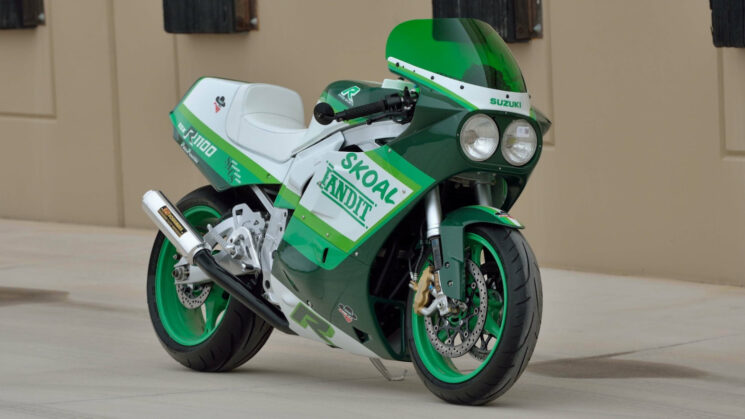
1986 Suzuki GSX-R 1100 Skoal Bandit There’s a grin-inducing impact that occurs whenever you apply liquor and tobacco sponsorships to a ’80s pace machine — and that’s no Skoal reference. This 1986 GSX-R 1100 pays tribute to one of the crucial iconic Suzuki Grand Prix liveries of the period — the Skoal Bandit.
Relating to two wheels, the Skoal livery is most frequently related to the Heron Suzuki workforce in 1985 and 1986. And whereas the workforce didn’t conquer the opposite producers in championship standings, the Skoal bandit was price celebrating, and a restricted variety of Suzukis left showroom flooring graced by the Bandit’s signature inexperienced and white. These bikes are very wanted at this time, commanding costs north of $50,000 in some cases.
The looks of this 1986 Suzuki GSX-R 1100 was reworked over a two 12 months interval right into a trustworthy Bandit tribute you see at this time, together with tasteful efficiency mods from Yoshimura, Öhlins and Tokico. Most notable is the livery, hand-painted by Scott Johnson in Skoal workforce model. This GSX-R 1100 is obtainable by Mecum as Lot T16, for those who can swallow the off-highway use title. [Photos Courtesy of Mecum Auctions, Inc.]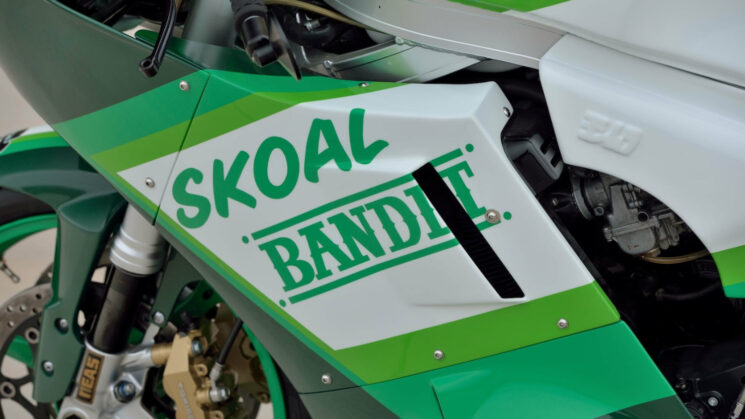
[ad_2]
Source_link




